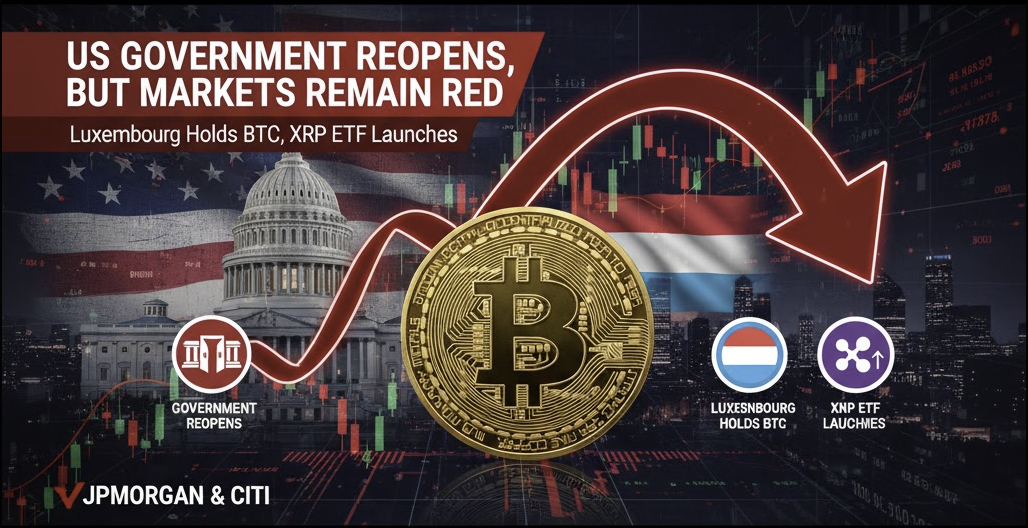The Inevitable Build-Up: Monetary & Fiscal Fueling the Fire
The fundamental driver behind this "risk-on" sentiment and the potential for asset bubbles is a concerted global effort towards pro-growth monetary and fiscal policies. As previously discussed, a loose monetary policy framework involves reduced capital adequacy requirements for banks, allowing for greater lending capacity. The projected $6 trillion in additional balance sheet capacity for large US banks alone, stemming from relaxed leverage rules, represents a massive injection of liquidity into the financial system.
This monetary easing is being complemented by significant fiscal stimulus. President Trump's proposed tax-cut extensions and increased spending on border security and military, projected to add $2.4 trillion (or more) to budget deficits over a decade, will directly inject capital into the economy. While figures like Elon Musk may criticize this as "utterly insane and destructive" due to the long-term debt implications, the immediate effect is a boost to spending power and investment capacity.
The "Cantillon Effect" is highly relevant here. Early recipients of this newly created money—financial institutions, large corporations, and those directly benefiting from tax cuts—are able to bid up asset prices before the broader economy experiences widespread price inflation. This initial surge in specific asset classes is a classic precursor to a bubble. The sheer volume of incoming liquidity creates a powerful incentive for capital to seek returns, naturally gravitating towards assets with perceived growth potential.
Lessons from History: Riding the Waves of Inflation
For seasoned investors who witnessed the liquidity-driven booms of 2001-2006 and 2012-2019, the current environment presents familiar patterns:
- Gradual Escalation to FOMO Peaks: Asset bubbles don't inflate instantly. They build in a series of smaller waves, punctuated by corrections, before accelerating into 1-2 major "blow-off" phases characterized by extreme FOMO. It's during these latter stages that valuations truly detach from fundamentals.
- Decoupling of Price and Fundamentals: As liquidity floods the system, asset prices will increasingly be driven by speculative demand rather than intrinsic value. While this creates opportunities for capital appreciation, it also raises the long-term risk profile.
- The Power of "Buying the Dips": In such an environment, market corrections, though often sharp, present valuable entry points for long-term investors. The phased deployment of credit through various channels means that liquidity isn't uniformly distributed at once, allowing for periodic re-evaluations and buying opportunities.
Based on the current valuation metrics for US stocks, while they are returning to peak regions, there's still a noticeable gap (10-15%) compared to the "Covid crazy" period and even more so compared to the dot-com bubble when adjusted for funding liquidity. This suggests that the market, while trending upward, hasn't yet entered the most irrational phase of widespread FOMO. Coupled with the fact that earnings outlooks for US stocks, while slowing, have recovered, this provides a temporary anchor, preventing valuations from becoming completely unhinged.
The persistent geopolitical risks, ongoing trade wars, and the ballooning US national debt will act as counter-catalysts. They will undoubtedly increase volatility and temper the most extreme forms of FOMO this year. However, once key trade deals are finalized, the Fed eventually cuts interest rates (even if slowly), and the proposed budget passes, only a significant economic slowdown (perhaps stemming from truly disastrous trade deals) could impede the expansion of this bubble.
Given that most economies are now prioritizing domestic growth and stimulus due to the challenges of global trade and the loss of traditional growth catalysts, the inevitable consequence is asset price inflation. It's crucial to understand that this isn't an immediate, week-to-week surge. It might take some time, involve corrections, and then accelerate. For investors, strategically buying the dips and adopting a multi-year buy-and-hold strategy during this phase significantly increases the probability of success.
Expect more "All-In" calls from market players, as observed recently (even if temporarily deflated by geopolitical spats). Many funds have already increased their leverage, meaning they will continue to push for upward momentum. The "risk-on" sentiment is undeniably real, driven by a focus on the next 1-2 quarters for leveraged players, and even longer for those with less leverage.
Key Asset Classes to Watch: Where the Liquidity Flows
The policy directions in the UK, US, and Europe clearly point to several beneficiaries:
- Defense Stocks: With increased geopolitical instability and a global emphasis on national security, defense spending is set to rise significantly. While these stocks have already performed well, sustained capital inflows are anticipated.
- Financial Stocks: The relaxation of capital adequacy regulations and a loosening of stringent oversight conditions will create substantial excess reserves for banks. This newfound capacity will either fuel increased share buybacks (boosting stock prices) or expand profit margins by enabling more lending and trading activities. This will directly benefit large banks and trading firms, likely encouraging more retail and institutional trading activity.
- M&A and Tech (especially AI): With abundant capital seeking deployment, Mergers and Acquisitions (M&A) activity is poised to surge. Tech giants, particularly those heavily invested in AI, are sitting on massive cash reserves and are eager to consolidate or acquire innovative players. This could be the biggest bubble within the broader market, as AI continues to attract speculative capital based on its transformative potential.
- Crypto: Cryptocurrencies are set to benefit significantly, especially as some fiat currencies continue to depreciate due to inflationary policies. Furthermore, the increasing acceptance of digital assets by traditional institutions suggests a long-term integration. Expect company board meetings to increasingly discuss adding crypto to corporate treasuries.
My Analysis: The shift towards crypto in corporate treasuries, as seen with MicroStrategy and Metaplanet, is a pivotal development. These companies are essentially becoming "proxy Bitcoin ETFs," offering traditional investors exposure to BTC through a corporate structure. This trend will likely accelerate, especially with the growing regulatory clarity from legislation like the GENIUS stablecoin bill and the CLARITY market structure bill in the US.
The debate sparked by Adam Livingston, advocating for a redefinition of corporate value to include Bitcoin holdings, highlights this evolving paradigm. While traditional finance emphasizes revenue and EBITDA, Livingston argues that the "product" of these Bitcoin-centric companies is their Bitcoin per share, offering a leveraged exposure to BTC. While this approach carries significant volatility risk if Bitcoin corrects sharply, the increasing institutional and corporate adoption signals a growing conviction in Bitcoin's long-term store-of-value proposition, especially against a backdrop of increasing sovereign debt and de-dollarization discussions.
The Gold Conundrum: Safe Haven vs. Risk-On
Gold, a traditional safe haven asset, presents a nuanced case in a "risk-on" environment.
- Loss of "Risk-On" Flow: Gold is fundamentally not a "risk-on" play. When speculative fervor dominates and investors chase growth, gold tends to lose capital that would otherwise be actively traded.
- Portfolio Allocation & Central Bank Demand: However, institutional investors will likely maintain a certain allocation to gold within their diversified portfolios as a hedge against tail risks. Critically, central banks are expected to increase their gold purchases, especially if confidence in the US dollar wanes. This strategic diversification aims to reduce reliance on the USD.
- Geopolitical Hedge: If you anticipate continued or escalating geopolitical instability (e.g., Iran-Israel conflict, China-Taiwan tensions), then buying gold during corrections remains a valid strategy as a hedge against extreme events. However, this is a bet on global conflict, not on an asset bubble. It's crucial to distinguish between these two investment theses.
My Analysis: The recent divergence where gold declined while stocks rose reinforces its role as a safe haven rather than a growth asset in the current "risk-on" climate driven by liquidity. While a strategic allocation to gold is prudent for risk management, chasing a "bubble" in gold is unlikely in this specific environment where capital seeks growth and speculative returns.
Cautionary Notes: Not All Sectors Will Win
It's important to remember that not every sector or emerging market will benefit from this expansive policy environment.
- Cuts Elsewhere: When nations prioritize defense spending or tax cuts, they often must reallocate funds from other sectors, which could face underinvestment.
- Emerging Market Vulnerability: Some emerging markets could face a "double hit" from debt and currency crises, especially those with existing fragilities exacerbated by trade wars or geopolitical strains. Even established economies like Russia could face significant risks, let alone those already struggling before the current global trade disruptions.
Investors must be discerning. Understanding the specific drivers of each asset class or sector is paramount. Blindly following broad market trends without understanding the underlying "game" being played can lead to significant losses. The lesson from New World Development's "wrong bet" serves as a stark reminder of the consequences of misjudging market dynamics and over-leveraging against a shifting backdrop.
In conclusion, while the current environment signals the potential for significant asset appreciation driven by liquidity, careful selection and understanding of investment theses are more crucial than ever. The "risk-on" sentiment is real, but it's important to differentiate between speculative plays and long-term value preservation strategies across the diverse landscape of financial and crypto assets.
Disclaimer
This article is for informational purposes only and should not be considered financial advice. Please do your own research before making investment decisions.


.png)





